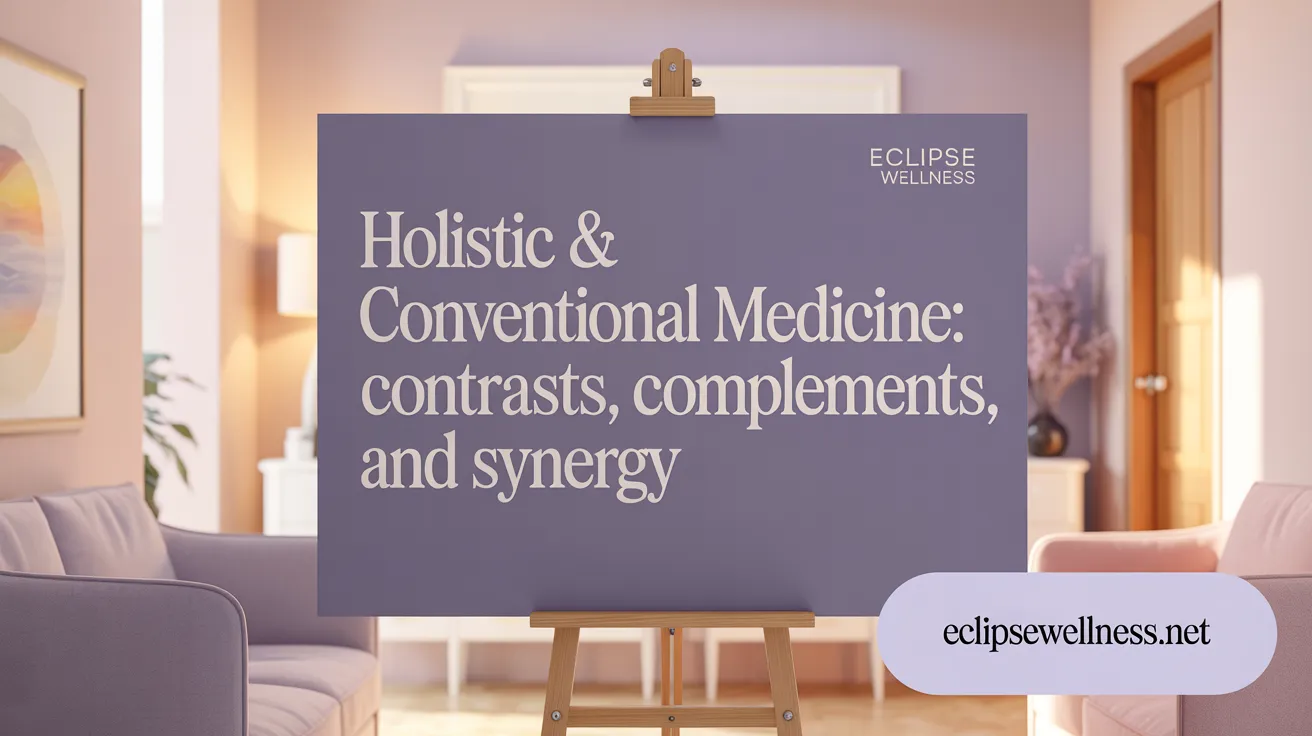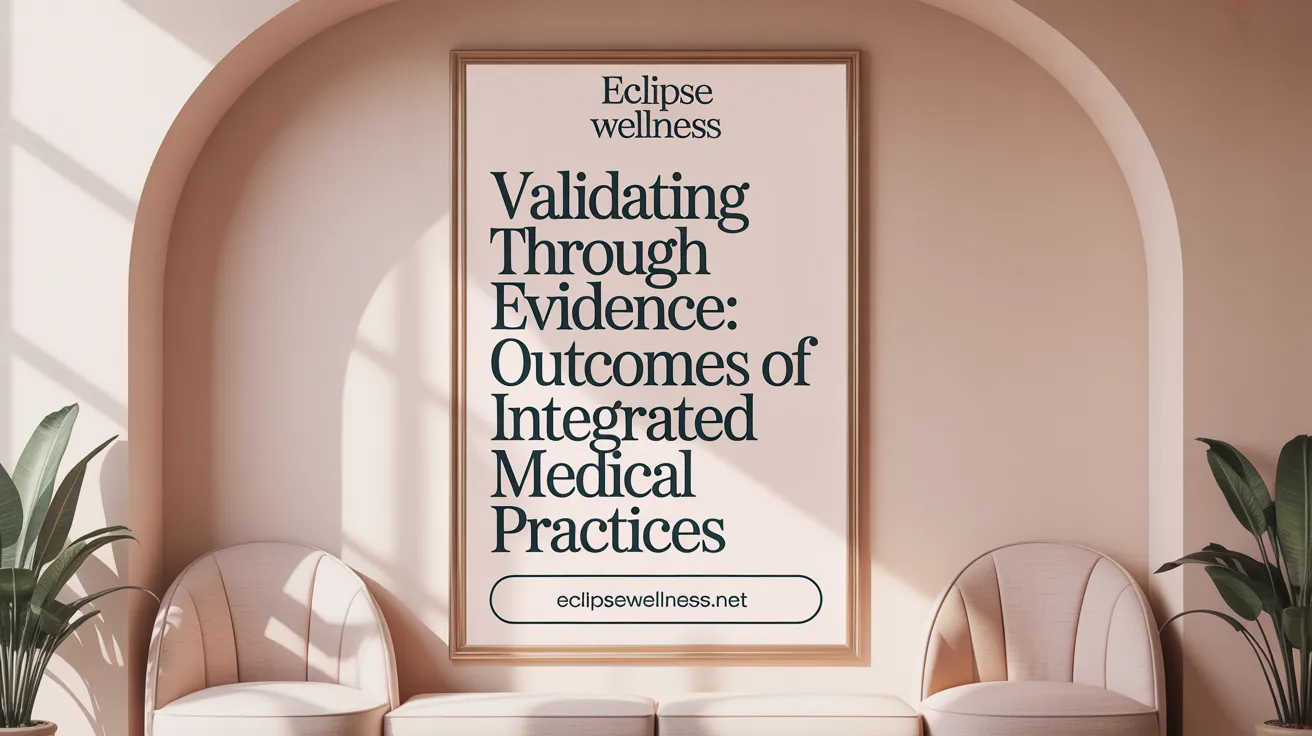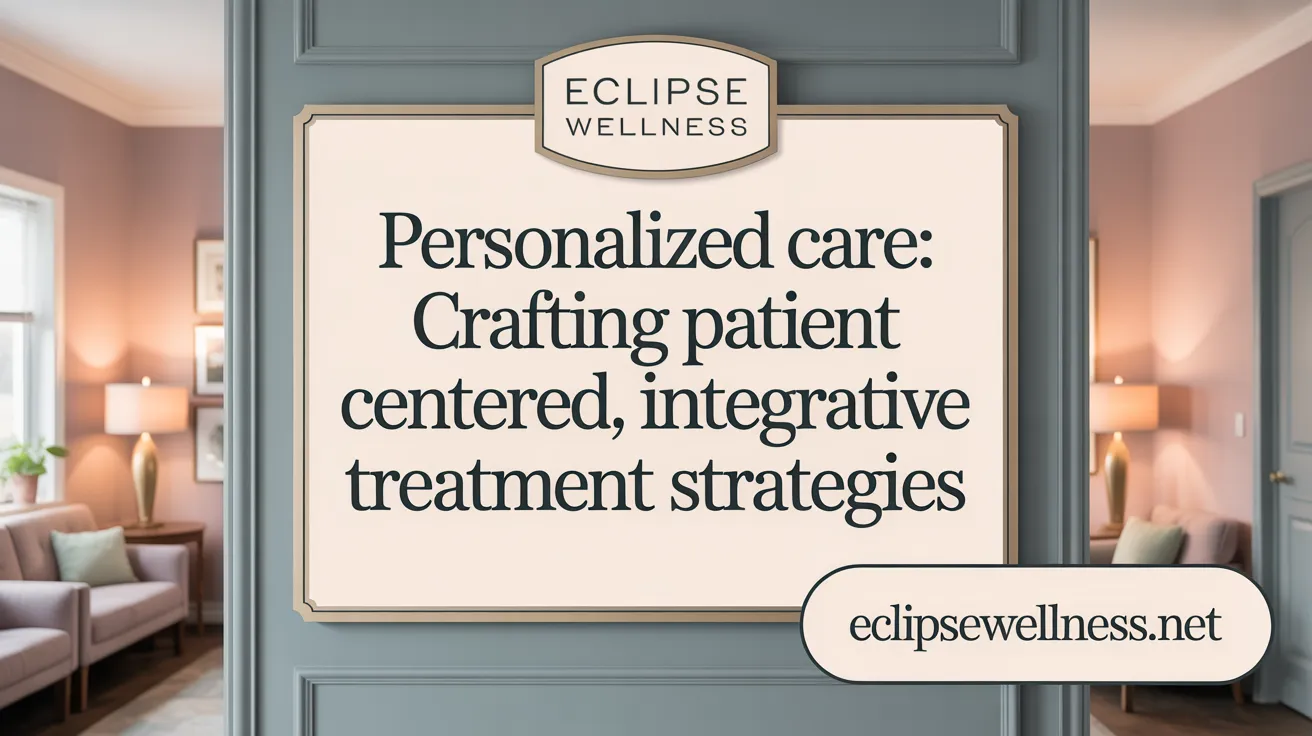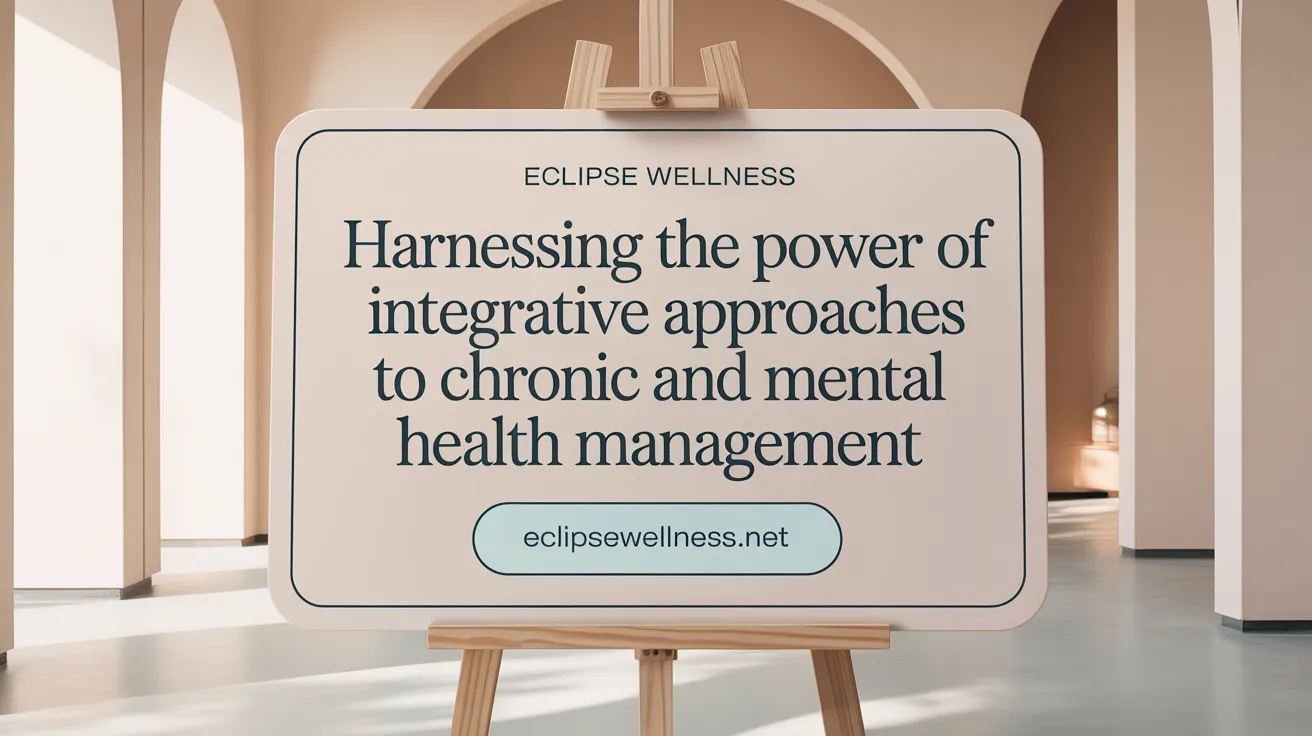Towards a Unified Health Paradigm
The convergence of holistic and conventional medicine represents a transformative movement in healthcare, aiming to harness the best of both worlds for optimal patient outcomes. As health challenges grow increasingly complex, integrating these approaches offers a comprehensive framework that addresses the physical, emotional, mental, and spiritual dimensions of health. This article explores the principles, benefits, scientific evidence, and practical frameworks supporting this integration, providing readers with a rounded perspective on advancing personal and public health through integrative medicine.
Foundations and Scope of Holistic and Conventional Medicine
What are the principles, definitions, and scope of holistic and conventional medicine?
Holistic medicine is a comprehensive, patient-centered approach that views health as the integration of body, mind, and spirit. It emphasizes the body's innate healing abilities, prevention, and the use of natural therapies such as acupuncture, herbal remedies, meditation, and lifestyle modifications. The core principles include treating the whole person, preventing illness before it develops, and empowering patients through education and active participation in their health (Holistic medicine overview).
In contrast, conventional medicine—also called allopathic or biomedical medicine—relies on scientific evidence to diagnose and treat diseases primarily through pharmaceuticals, surgeries, and advanced diagnostic testing. It is highly effective in acute care, emergency scenarios, and managing specific conditions with targeted interventions (Conventional medicine overview).
The scope of holistic medicine encompasses a wide range of complementary and alternative therapies that promote overall well-being and chronic disease management. These include traditional Chinese medicine, Ayurveda, naturopathy, and mind-body techniques like yoga and biofeedback. It often integrates these into mainstream healthcare through models like integrative medicine, which emphasize safety, efficacy, and patient preferences (Integration of CAM and Conventional Medicine).
Conventional medicine's scope focuses on addressing pathologies using evidence-based practices rooted in modern science. It specializes in diagnosing illnesses based on deviations in organs or tissues and suppressing symptoms through medication or surgery (Conventional medicine).
Both paradigms are continuously evolving, with research supporting their integration to improve patient outcomes. Initiatives by organizations such as WHO and NCCIH promote safe practices, respect for cultural differences, and the development of guidelines ensuring that holistic and conventional treatments complement each other effectively.
Understanding these differences helps healthcare providers and patients navigate options that respect individual values and scientific standards, fostering a more comprehensive approach to health and healing (Complementary and Alternative Medicine Overview).
Contrasts and Complements: Holistic versus Conventional Medical Practices

How do holistic and conventional medical practices differ, and how can they complement each other?
Holistic and conventional medical approaches stand apart mainly in their focus and treatment philosophy. Conventional medicine is rooted in scientific research and emphasizes the diagnosis and rapid treatment of specific illnesses through pharmaceuticals, surgery, and other technological interventions. Its goal is to quickly alleviate symptoms, often addressing disease in isolation (Conventional medicine overview, Conventional medicine, Conventional medicine).
In contrast, holistic medicine prioritizes treating the person as a whole, considering physical, mental, emotional, spiritual, and environmental factors that influence health. Holistic practitioners use natural therapies, lifestyle modifications, and preventative measures such as acupuncture, herbal remedies, meditation, and diet to identify and address root causes of health issues (Holistic medicine overview, Holistic medicine overview, Holistic medicine overview).
Despite these differences, these medical paradigms can work together effectively. Conventional medicine excels in managing acute conditions and emergencies, providing swift and targeted treatment. Meanwhile, holistic practices support long-term health, mental well-being, and prevention, reducing the likelihood of illness recurrence (Integration of CAM and Conventional Medicine, Integrative medicine overview, Integrative medicine and health (IMH)).
Integrative medicine advocates blend these approaches by combining evidence-based conventional treatments with holistic therapies tailored to individual needs. This synergy aims to optimize health outcomes, offering comprehensive and personalized care that respects the complexity of human health (Integrative Medicine Overview, Integrative medicine and health (IMH), Six benefits of integrative medicine).
In today’s healthcare landscape, the most beneficial paradigm might involve leveraging the strengths of both systems—using conventional medicine for immediate and severe health issues, while employing holistic strategies to maintain well-being, prevent disease, and promote healing through natural, patient-centered methods (Integration of CAM and Conventional Medicine, Holistic medicine overview, Can Integrative and Conventional Medicine Coexist?).
Evidence and Outcomes: Validating Integrated Medical Approaches

What scientific research and evidence support the combined use of holistic and conventional medical approaches?
Scientific studies and systematic reviews have increasingly confirmed the benefits of integrating holistic and conventional medicine through evidence-based complementary and alternative medicine (EBCAM) therapies. Research supports the effectiveness of specific herbal medicines, acupuncture, meditation, yoga, and other mind-body techniques in managing a variety of health conditions, including chronic pain, cancer-related symptoms, mental health issues, and hypertension. These therapies often enhance standard treatment outcomes and can reduce side effects.
Leading global health organizations, such as the National Institutes of Health (NIH) and the World Health Organization (WHO), advocate for rigorous scientific research—like randomized controlled trials (RCTs)—to establish the safety and efficacy of these therapies. Many of their guidelines and certifications are based on evidence demonstrating that the most effective integrated approaches prioritize patient safety, scientific validation, and personalized care.
This body of research continues to grow, reinforcing the role of traditional practices when supported by scientific data. By combining empirical evidence with clinical expertise, healthcare providers can offer safer, more effective, and holistic treatment options that align with individual patient needs (Integrative Medicine Overview).
What are the benefits and health outcomes associated with integrating holistic and conventional medical practices?
The integration of holistic with conventional medicine provides multiple benefits, contributing to more comprehensive and personalized patient care. It addresses biological, psychological, and social factors simultaneously, promoting overall health and disease prevention (Six benefits of integrative medicine).
Patients experience improved symptoms, better management of chronic diseases, and often report higher satisfaction with care. For example, therapies like acupuncture and mind-body techniques have shown success in alleviating pain, reducing anxiety, and improving emotional well-being (Integrative Medicine Benefits).
Moreover, this approach encourages the use of natural, less invasive treatments—such as herbal medicine and lifestyle modifications—that are generally safe, cost-effective, and accessible. These therapies help reduce reliance on pharmaceuticals and surgical interventions, minimizing adverse effects (Integrating Alternative Healing into Modern Healthcare).
Together, these combined practices foster health maintenance, boost immune function, and support mental health, leading to better long-term outcomes. By emphasizing a holistic view, integrated medicine enhances quality of life and aligns healthcare with modern principles of personalized, patient-centered care (Integrative Medicine Overview).
More information search query
For further insights into the scientific evidence and health outcomes of integrated medicine, search queries can include terms such as "scientific research on integrative medicine", "clinical trials of complementary therapies", and "health outcomes of holistic and conventional approaches". These resources help deepen understanding and guide evidence-based practice in holistic and conventional health integration.
Models and Frameworks for Effective Integration
 Integrating holistic and conventional medical paradigms requires structured approaches that promote collaboration, patient-centered care, and evidence-based practices. Several established models and frameworks support this goal.
Integrating holistic and conventional medical paradigms requires structured approaches that promote collaboration, patient-centered care, and evidence-based practices. Several established models and frameworks support this goal.
One common approach is the multidisciplinary team model, where healthcare professionals from various fields—such as physicians, naturopaths, acupuncturists, and dietitians—work together to design comprehensive treatment plans. This cooperation ensures that each discipline’s strengths are utilized, and patient needs are prioritized (Integration of CAM and Conventional Medicine, Models of CAM integration in healthcare, Integrative health approaches).
Patient-centered models further emphasize individual preferences, cultural considerations, and holistic well-being. These approaches focus on engaging patients as active participants in their healthcare, tailoring interventions to their unique biological, psychological, social, and spiritual contexts (Integrative Medicine Benefits, Personalized medicine and lifestyle, Patient-provider relationship in integrative care).
Theoretical frameworks such as the coexistence, cooptative, cooperative, and collaborative models describe varying degrees of integration. Coexistence allows parallel practice with minimal interaction, while cooptative and cooperative models involve increasing levels of communication and shared protocols. The most integrated approach, the collaborative model, fosters full team-based care where conventional and holistic practitioners actively coordinate (merging conventional and complementary medicine, Models of CAM integration).
Supporting these models are clinical protocols and health information systems that facilitate information sharing, standardize practices, and track outcomes. International classification systems like the World Health Organization’s International Classification of Functioning (ICF) help in systematically evaluating patient progress across different domains (WHO traditional, complementary and integrative medicine, Policy frameworks on integrative medicine).
Frameworks like the double diamond process from design thinking guide the development of new integration strategies, from discovery through to implementation and evaluation. Donabedian’s structure-process-outcome model provides a basis for assessing the quality of integrated care by examining the healthcare setting, the delivery process, and patient health results (Donabedian's model and integrative care evaluation, Frameworks for integrative care).
Research and clinical trials play a vital role in validating traditional knowledge systems like Ayurveda and Chinese medicine within biomedical contexts. Evidence generated from rigorous studies supports best practices and informs policy changes (Scientific research on CAM therapies, Traditional medicine and biomedical integration).
Educational initiatives are crucial for fostering mutual understanding among practitioners. This includes curricula that incorporate holistic principles into medical training and professional development programs that emphasize interdisciplinary teamwork (Integrating CAM into medical education, Education and training in integrative medicine).
Policy frameworks and healthcare regulations also underpin successful integration efforts. Clear guidelines, licensing, and accreditation standards ensure practitioner competence and patient safety (Policy and licensing in integrative medicine, Regulation of traditional and complementary medicine).
In summary, effective integration of holistic and conventional medicine employs a blend of multidisciplinary collaboration, patient-centric models, systematic frameworks like those of Donabedian and the double diamond, and supportive policies. These methods collectively aim to deliver safe, effective, and culturally appropriate healthcare that respects the complexity of human health (Integration of CAM and conventional medicine, Evidence-based integrative medicine practices, Holistic medicine and conventional care integration).
Strategies, Safety, and Challenges in Integrative Medicine
What are the key strategies and rationale behind integrative medicine for improving health?
Integrative medicine adopts a holistic, patient-centered approach that fuses conventional medical treatments with evidence-based complementary therapies such as acupuncture, massage, chiropractic care, meditation, yoga, and herbal medicine.
The core strategy involves tailoring individualized care plans that address not just physical health but also emotional, mental, and spiritual well-being. Emphasizing prevention and lifestyle changes—like balanced diet, regular exercise, and stress management (healthy habits, healthy lifestyle tips)—these strategies aim to support the body's innate healing mechanisms (integrative health approaches, whole person healthcare approach).
The rationale is rooted in addressing the root causes of illness rather than just symptoms, thus promoting overall wellness (holistic medicine principles, personalized medicine). By combining natural, minimally invasive treatments with traditional medicine, it often enhances symptom relief for chronic pain, sleep disturbances, and mental health conditions (integrative medicine benefits, evidence-based integrative medicine).
Healthcare providers increasingly encourage discussions about these therapies, fostering a more comprehensive treatment environment (consulting healthcare providers). Robust research and clinical data further validate the safety and effectiveness of these practices, which contribute to improved health outcomes and empower individuals to participate actively in their health management (scientific evaluation of CAM therapies, research on outcomes of integrated medicine).
What safety considerations, challenges, and precautions are important when combining holistic and conventional medicine?
Safety in integrating holistic and conventional medicine requires careful attention to potential drug-herb interactions, which can lead to adverse effects or reduce treatment efficacy (herbal supplements and interactions, safety of complementary therapies).
One of the main challenges is regulatory variability, as practitioner training and treatment standards differ across regions, potentially impacting treatment quality and safety (credentialing and staff training in CAM, regulation of traditional therapies).
To mitigate risks, thorough patient assessment and clear communication among healthcare providers are essential (communication in healthcare integration). Informed consent about the experimental or complementary nature of some therapies should be obtained (patient-provider partnerships).
Coordination involves involving multidisciplinary teams that can oversee treatment plans, ensuring therapies complement rather than conflict (multidisciplinary teams for integrative medicine). Scientific validation through rigorous research and the development of clinical guidelines are crucial to establish safety standards (research and evaluation of CAM therapies, clinical guidelines).
Ultimately, a cautious, well-regulated approach emphasizing education, transparency, and research ensures that the integration of holistic and conventional treatments maximizes benefits while minimizing risks (holistic and conventional medicine integration, integrating alternative healing).
Personalized, Patient-Centered Care in Integrated Medicine
 In the evolving landscape of healthcare, personalized, patient-centered approaches serve as a cornerstone for effective integrated medicine. This model emphasizes the customization of treatments to meet each individual's unique biological, psychological, social, spiritual, and lifestyle needs. It recognizes that health is a holistic concept, involving more than simply the absence of disease.
In the evolving landscape of healthcare, personalized, patient-centered approaches serve as a cornerstone for effective integrated medicine. This model emphasizes the customization of treatments to meet each individual's unique biological, psychological, social, spiritual, and lifestyle needs. It recognizes that health is a holistic concept, involving more than simply the absence of disease.
A fundamental aspect of personalized care is the active partnership between the patient and healthcare provider. Shared decision-making is prioritized, fostering open communication and collaboration. Patients are empowered to participate in their treatment plans, which often combine conventional medical therapies with evidence-based complementary practices such as acupuncture, nutritional counseling, meditation, and herbal medicine.
Customization considers not only the specific health condition but also personal values, cultural beliefs, and daily routines. For example, a treatment plan might integrate dietary modifications suited to a patient's cultural background alongside standard pharmacological interventions, creating a comprehensive, tailored approach.
Team-based care is vital, involving a multidisciplinary team of physicians, naturopaths, nutritionists, psychologists, and other specialists. This collaborative approach ensures continuous evaluation, adjustments, and support, optimizing health outcomes. Regular monitoring and feedback allow for dynamic treatment modifications aligned with evolving patient needs.
Benefits include improved management of chronic diseases, better adherence to treatments, and enhanced overall well-being. By addressing the person as a whole, integrated and personalized care promotes long-term health and resilience.
Research indicates that these approaches can lead to reduced healthcare costs, fewer side effects, and increased patient satisfaction. Emphasizing outcomes research and system-level reforms further strengthens the foundation for sustainable, holistic healthcare systems.
More information about this approach can be found through searches using terms like "Personalized patient-centered integrated medicine," highlighting its growing role in modern healthcare strategies.
Holistic Benefits Across Mental, Emotional, Physical, and Spiritual Realms
How does a holistic approach benefit mental, emotional, physical, and spiritual well-being?
A holistic approach enhances health by recognizing that the mind, body, and spirit are interconnected, and addressing one aspect can positively influence others. This method emphasizes understanding and treating the root causes of health issues rather than just symptoms, which fosters overall balance and resilience (Holistic medicine overview, Holistic Medicine Principles).
Practices like mindfulness, healthy nutrition, regular exercise, and spiritual reflection are integrated to support mental clarity, emotional stability, and physical vitality. For example, mindfulness meditation can reduce stress and improve mood, while proper nutrition and physical activity strengthen the body's defenses and promote mental sharpness (Integrative Medicine Overview, 10 Healthy Habits for Achieving Optimal Health).
Incorporating diverse cultural and traditional healing practices enriches holistic care, making it adaptable to individual beliefs and preferences. Such integration not only diminishes stress but also builds emotional strength and supports spiritual growth (Traditional medicine practices, Holistic vs Modern Western Medicine).
This comprehensive care approach encourages self-awareness, self-care, and early prevention while strengthening support networks and community bonds. The result is a more sustainable, personalized health strategy that improves overall quality of life (Personalized medicine, Benefits of Seeing a Holistic Doctor).
Ultimately, by treating the person as an integrated whole, holistic health strategies cultivate well-being across all realms, fostering long-term health and happiness (Integration of CAM and Conventional Medicine, Integrative Medicine Benefits).
Integrative Medicine in Managing Chronic Disease, Cancer, and Mental Health
 Integrative medicine significantly enhances the management of chronic conditions, cancer, mental health, and pediatric care by combining scientifically supported conventional treatments with holistic, patient-centered therapies. This approach aims to treat the whole person—mind, body, and spirit—by integrating evidence-based practices such as acupuncture, herbal medicine, massage therapy, mindfulness, and lifestyle interventions (https://www.honorhealth.com/healthy-living/six-benefits-integrative-medicine).
Integrative medicine significantly enhances the management of chronic conditions, cancer, mental health, and pediatric care by combining scientifically supported conventional treatments with holistic, patient-centered therapies. This approach aims to treat the whole person—mind, body, and spirit—by integrating evidence-based practices such as acupuncture, herbal medicine, massage therapy, mindfulness, and lifestyle interventions (https://www.honorhealth.com/healthy-living/six-benefits-integrative-medicine).
For chronic illnesses like autoimmune diseases, diabetes, and cardiovascular conditions, integrative medicine promotes preventive strategies through healthy diet, physical activity, stress reduction, and natural therapies. These practices can help alleviate symptoms, improve immune function, and decrease dependence on medications, leading to more sustainable health outcomes (Integrative Medicine Benefits, WHO Everyday Actions for Better Health).
In cancer care, integrative therapies support symptom management, reduce side effects of treatments like chemotherapy and radiation, and boost patients’ overall well-being. Techniques such as meditation, yoga, and guided imagery are used to help cope with fatigue, anxiety, and pain, thereby improving quality of life (Use of complementary and alternative medicines in cancer patients, Complementary and Alternative Medicine in Cancer).
Mental health benefits are also prominent within integrative medicine, with practices like mindfulness and Tai Chi shown to lessen anxiety, depression, and stress. These therapies promote relaxation and emotional resilience, which are crucial for recovery and long-term mental wellness (Integrative medicine for mental health, Complementary and Alternative Medicine: Mind-Body Practices).
Pediatric integrative care focuses on early detection, holistic development, and empowering families. Incorporating gentle, evidence-based therapies and promoting healthy lifestyles from a young age can prevent disease and support emotional and physical growth (The Rising Role of Integrative Medicine Bridging Conventional and Holistic Care).
Overall, integrative medicine supports early intervention, addresses root causes, and fosters patient participation. Its combination of conventional and holistic care provides a comprehensive, less invasive approach that improves outcomes, reduces healthcare costs, and enhances patient satisfaction. This evolving healthcare model aims to optimize health across all stages of life, emphasizing wellness, prevention, and personalized treatment (Integration of CAM and Conventional Medicine, Integrative Medicine: A Holistic Approach to Healthcare).
The Future of Integrated Healthcare
Integrating holistic and conventional medicine represents the future pathway towards comprehensive, personalized, and effective healthcare. By combining the strengths of evidence-based conventional treatments with holistic practices that honor the interconnectedness of the human experience, integrative medicine offers improved patient satisfaction, better health outcomes, and sustainable well-being. Ongoing research, enhanced education, cultural sensitivity, and robust frameworks will continue to support this evolution, empowering individuals and healthcare systems alike to embrace a truly whole-person approach. The journey toward integration is both a renewal of ancient wisdom and a scientific advancement, promising more resilient futures for patients worldwide.
